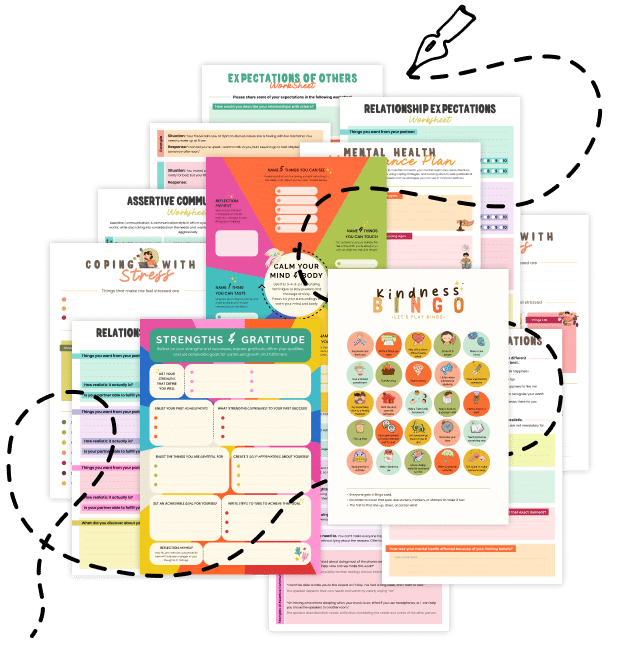20 Things About Implementation Intentions
Learn how Implementation Intentions can bridge the gap between planning and action. Discover 20 essential insights on setting clear “if-then” goals to boost follow-through, motivation, and productivity.
1. What Are Implementation Intentions?
Implementation Intentions are clear, pre-decided plans that specify exactly when, where, or how you will execute a goal. They often take the form of “if-then” statements—for example, “If it’s 6 a.m., then I’ll go for a run.”
2. Moving from Goals to Actions
While having a goal (e.g., “I want to exercise more”) is great, it’s often too broad. Implementation Intentions transform these goals into actionable steps, creating a direct link between intention and behavior.
3. The Power of “If-Then” Planning
By creating specific “if-then” statements, you prime your mind to recognize triggers—like a time, place, or event—so you’ll automatically carry out the related action. This approach reduces reliance on willpower.
4. Reducing Decision Fatigue
Each day is filled with choices that drain mental energy. Implementation Intentions help by pre-deciding actions. Instead of weighing options in the moment, you simply follow your plan.
5. Examples in Everyday Life
- Health Goals: “If it’s lunchtime, then I’ll eat a salad first.”
- Productivity: “If I finish one task, then I’ll spend five minutes planning the next.”
- Habit Building: “If it’s Sunday morning, then I’ll review my weekly goals.”
6. Backed by Research
Studies show that people who form implementation intentions are significantly more likely to follow through on tasks—from exercising regularly to keeping New Year’s resolutions.
7. Enhancing Motivation and Consistency
Implementation intentions provide clear roadmaps, making it easier to stay consistent. Instead of relying on fleeting motivation, you have a structured plan to guide you.
8. Overcoming Procrastination
By breaking larger tasks into smaller “if-then” steps, you can tackle procrastination. Clear triggers and actions reduce the mental barriers that often cause delays.
9. Handling Distractions
“If-then” statements can help manage distractions. For example: “If I feel the urge to check social media during work, then I’ll take a 30-second break to breathe before deciding to proceed.”
10. Cognitive Benefits
Implementation intentions free up mental bandwidth by automating certain decisions, which can reduce stress and allow for sharper focus on complex tasks.
11. Setting Realistic Triggers
Ensure your “if-then” triggers are specific and realistic. For instance, “If the clock shows 9 p.m., then I’ll prepare my clothes for tomorrow’s workout” is more effective than “I’ll work out later at night.”
12. Adapting to Changing Circumstances
Life can be unpredictable, so be prepared to adjust your implementation intentions. Having a backup plan—“If my morning run is canceled due to weather, then I’ll do a 20-minute indoor workout”—keeps you on track.
13. Balancing Simplicity and Complexity
While “if-then” plans can be straightforward, overly complex plans may become hard to follow. Strive for clarity—each trigger should connect to a single, achievable action.
14. Pairing with Habit Stacking
Combine implementation intentions with habit stacking—attach a new action to an existing habit. For example: “If I finish brushing my teeth, then I’ll spend two minutes meditating.”
15. Visibility and Reminders
Place visual cues or reminders where you’ll encounter them at the right moment. A sticky note near your desk could read, “If it’s 3 p.m., then I’ll take a five-minute stretching break.”
16. Accountability and Feedback
Share your “if-then” plans with a friend or mentor. Public accountability often increases the likelihood of following through, plus feedback can help refine your strategies.
17. Works for Long-Term and Short-Term Goals
Whether you’re training for a marathon or wanting to make daily reading a habit, implementation intentions can help you consistently move forward, one “if-then” statement at a time.
18. Handling Setbacks
If you miss an action, note what went wrong. Did the trigger not occur as expected? Adjust the plan. Implementation intentions are flexible, so you can refine triggers or actions as needed.
19. Fuels Self-Efficacy
Successfully executing your “if-then” plans boosts confidence. Each time you follow through, you reinforce the belief that you can indeed achieve your goals, creating a positive feedback loop.
20. Related Topics to Explore
- Micro-Pomodoros: Short bursts of work that can be integrated into implementation intentions.
- Task-Specific Anxiety Management: Pair “if-then” statements with anxiety reduction strategies for challenging tasks.
- Adaptive Confidence: Building realistic self-assurance by turning intentions into actions.
- Cognitive Load Theory: How structured plans reduce mental effort and improve follow-through.
Quick Tips for Effective Implementation Intentions
- Be Specific: Clearly define triggers (“if”) and actions (“then”).
- Keep It Realistic: Ensure the action is doable and aligns with your schedule or environment.
- Use Visual Cues: Place reminders where you’ll see them at critical moments.
- Track Progress: Note each success or stumble, and refine your plan accordingly.
- Celebrate Small Wins: Each completed “if-then” plan is progress—acknowledge it!
Implementation Intentions bridge the gap between having a goal and actually taking consistent, productive action. By drafting clear “if-then” statements, you reduce the cognitive load of decision-making, minimize procrastination, and create a straightforward roadmap to success. Whether you’re aiming for healthier habits, increased productivity, or lifelong aspirations, implementation intentions can transform your good intentions into real results.
Share this article with anyone seeking to close the gap between planning and doing. Embrace the power of “if-then” statements, and watch your goals become part of your daily routine!

